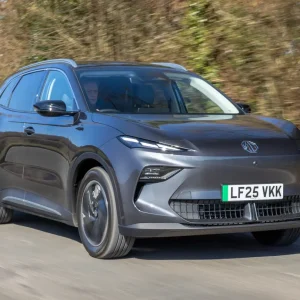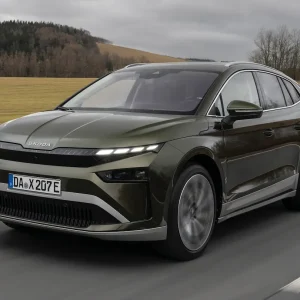Chevrolet’s exit from the UK at the end of last year left General Motors without a value brand and the Viva has stepped in to mop up ex-Spark and Aveo customers.
The strategy is clear with Vauxhall’s new city car. It’s a value based proposition with a list price purposefully set to undercut rivals and the majority of sales will go to retail customers, mostly over 50s with a female bias. Vauxhall has earmarked just 5% of sales of the five-door only model to go to company car drivers, but there could be potential for more if the costs are anything to go by.
The model line-up is very simple with two trims to choose from and one naturally aspirated three-cylinder 1.0-litre petrol engine. There is an Ecoflex model option that brings CO2 emissions down to 99g/km, but this was not available to drive on the launch.
The £7490 P11D entry price for the SE isn’t just a marketing message to bring people in to buy the higher spec SL model either. Vauxhall is expecting the entry model to take 60% of volume. Air-con is a £495 option for the SE and it might seem a bit odd not to include it as standard in 2015, but that still undercuts the Viva’s closest rival, the Citigo by £1380. Customers that want to spruce up what is a rather sober exterior design with some metallic paint can add it for £545.
The simple make up of the model lines, standard equipment and Vauxhall’s positioning of the car has related to an impressive residual value result of 37.5% and this outperforms rivals like the Citigo by five percentage points.
The high RV, low P11D price and decent 104g/km performance on the car we tested, means the Viva is the cheapest car to run in its class at 24p per mile. This compares with 26p on the Citigo, Hyundai i10 and the Kia Picanto.
With the low price, you would expect a pretty basic car and while it is very much a value based product, there is a generous level of standard specification available, including cruise control, lane departure warning and front electric windows on the SE trim. It is a bit of a shock not to see a car with a central touchscreen available, but Vauxhall will be adding its Intellilink system as an option early next year and the higher trim SL models will get Vauxhall’s OnStar in-car connectivity technology as standard from January next year.
There are some caveats with the Viva, which a low price and good spec can’t address. The 1.0-litre is fine, but it’s not quite as fizzy as the 115hp turbo charged version offered on the Corsa and Adam. It’s totally adequate for journeys about town, but you have to rev a bit to get up inclines. The boxy shape of the car means you get a bit of wind noise at higher speeds, but the noise from the engine is actually relatively quiet on the motorway.
The design of the exterior and interior are both quite sober, particularly in a base colour paint, but you could also look at this as the Viva not pretending to be something it’s not. If you’re looking for fuss and fancy design, go for an Adam.
While there won’t be many cries of hysteria for the revival of the Viva name, Vauxhall have put together a tidy little package born out of value and practicality which could make sense for some low mileage fleets.
Vauxhall Viva 1.0 SE |
| Model price range £7490-£9495 |
| Residual value 37.5% |
| Depreciation £4965 |
| Fuel £4945 |
| Service, maintenance and repair £1420 |
| Vehicle Excise Duty £0 |
| National Insurance £559 |
| Cost per mile 24.0p |
| Fuel consumption 62.8mpg |
| CO2 (BIK band) 104g/km (15%) |
| BIK 20/40% per month £20/£40 |
| Warranty 3yrs/60,000mls |
| Boot space (min/max) 206/1013 |





